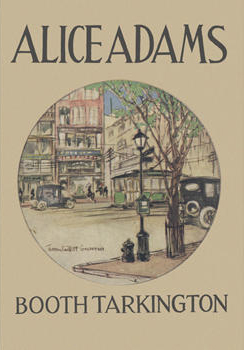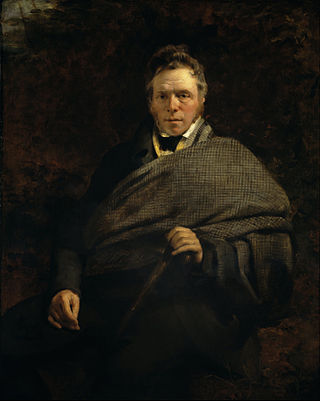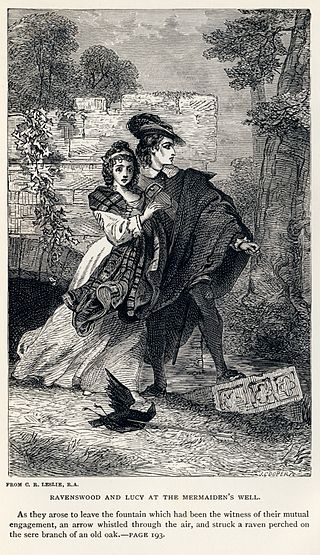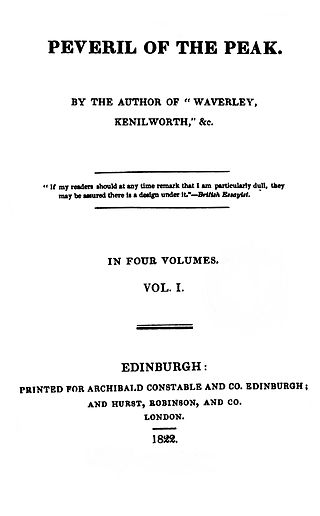Stories
No Advantages
This narrative retells the lives of members of the Laidlaw family who lived in Ettrick Valley, Scotland, in the 18th century. The title comes from the judgment by the Statistical Account of Scotland in 1799 that This parish possesses no advantages. Will O'Phaup was a mythical man, who was a prodigious runner, a bootlegger, and a heavy drinker; he had encounters with fairies and ghosts. Thomas Boston was the local presbyterian preacher at the same time; he wrote on matters of faith, he was obsessed with religious guilt, his ideas were borderline heretical, he had a very hard life. James Hogg and James Laidlaw were cousins; Hogg became a poet and friend of Walter Scott, while Laidlaw was a man of modern ideas but traditional mentality, who was obsessed with going to America, where he eventually took his family when he was already in his old age.
The View from Castle Rock
This story narrates the voyage of James Laidlaw and his family to Canada. The title stems from the event when James took his ten-year-old child Andrew to the top of the Rock of Edinburgh Castle to show him the coast of America (actually Fife). James Laidlaw (Old James) had one daughter, Mary, and 5 sons, Robert, James, Andrew, William, and Walter. Robert and William had moved to the Highlands before the move, while the others followed in the voyage (although James has left earlier). Andrew's family is composed of his pregnant wife Agnes and their infant son (Young) James. Agnes gives birth to a girl during the ocean crossing. Mary is very attached to Young James: she takes care of him and panics when he disappears. Young James dies shortly after their landing. Walter writes down an account of the trip in his journal. He meets a rich girl suffering from tuberculosis; her father suggests he follow them and get a job in his business, but Walter refuses.
Illinois
William Laidlaw also moves to America, specifically to the town of Joliet, Illinois. He is the most forward-looking of Old James' children. He wants to break with his roots and start a completely new life with his wife Mary. But he dies of cholera and his wife and children are taken to Canada by Andrew Laidlaw. The oldest of the children, Jamie, steals his newborn sister Jane and tries to direct the blame on a half-Indian neighbor. This is a plot to keep the family in their home, but it fails. The youngest of William's sons, Thomas, is the author's great-grandfather.
Working for a Living
This story is about Alice Munro's father. As a teenager, he shunned the peasant life of his parents and passed time in the bush hunting and trapping. This led in his adult life to a business of raising fur animals, especially silver foxes and mink. During the war, when Alice was a young girl, the business started to go bad, but was saved by the mother who managed to sell their furs to American tourists. Eventually they had to give up the enterprise and the father found a job in a foundry.
Fathers
The author recalls the days of school and specifically the relationship with two schoolmates, Dahlia Newcombe and Frances Wainwright. The figures of their fathers are compared with Alice Munro's own father. Dahlia's dad was a violent man who regularly beat his children and wife. Mr. Wainwright was a gentle person belonging to the Salvation Army. Alice's father was severe and sometimes used corporal punishment, but never out of anger and without a reason.
Lying Under the Apple Tree
A neighbor of Alice Munro's family, Miriam McAlpin, kept horses. Apparently she loved horses more than people. The young Alice one day entered the property to lie under her blossoming apple trees, to satisfy a literary fancy. She was discovered and accused of going there with a boyfriend.
Later she started her first romantic relation with the stable boy, Russell Craik. One day he takes her to the barn but Miriam enters it. Alice leaves in secret but overhears something and understands that the two have an intimate relationship.
She never sees Russell again.
Hired Girl
It is the chronicle of a summer passed as a servant on an island for a rich family. The persons she meets there are the origins of the girl's literary fantasies.
The Ticket
Just before her first wedding, the narrator has the occasion to reflect upon the marriages of other women in her family. It seems that Aunt Charlie is the only one who married for love. Surprisingly, this same aunt gives the narrator a big amount of money to get out of her marriage in case it doesn't work out.
Home
On a visit home after the end of her marriage, the narrator has to take her father to the hospital. He has remarried after the death of her mother, and the new wife Irlma is an energetic woman who claims that she was always the right woman for him.
What Do You Want to Know For?
After she married for the second time, at the age of sixty, Alice Munro has a health scare: she may have breast cancer. At the same time she and her husband are trying to trace the origin of an unusual crypt they find in an old cemetery. They find out that it was originally built for the body of a small child in the 19th century, and that later other members of the same family were buried there. A curious fact is that a desk with a bible and a lamp were left inside the crypt. Eventually it turns out that the cancer scare was uncertain.
Messenger
In the present, the author travels to Joliet, Illinois, where her ancestor William Laidlaw died. She finds an Unknown Cemetery, but can't find any trace of him. The book closes with the oldest memories of living members of the family. In one of their houses Alice, as a child, could put her ear to a big mother-of-pearl seashell and hear the sound of the sea and her blood.

Hector Hugh Munro, better known by the pen name Saki and also frequently as H. H. Munro, was a British writer whose witty, mischievous and sometimes macabre stories satirize Edwardian society and culture. He is considered by English teachers and scholars a master of the short story and is often compared to O. Henry and Dorothy Parker. Influenced by Oscar Wilde, Lewis Carroll and Rudyard Kipling, he himself influenced A. A. Milne, Noël Coward and P. G. Wodehouse.

Alice Adams is a 1921 novel by Booth Tarkington that received the 1922 Pulitzer Prize for the Novel. It was adapted as a film in 1923 by Rowland V. Lee and more famously in 1935 by George Stevens. The narrative centers on the character of a young woman who aspires to climb the social ladder and win the affections of a wealthy young man named Arthur Russell. The story is set in a lower-middle-class household in an unnamed town in the Midwest shortly after World War I.

James Hogg was a Scottish poet, novelist and essayist who wrote in both Scots and English. As a young man he worked as a shepherd and farmhand, and was largely self-educated through reading. He was a friend of many of the great writers of his day, including Sir Walter Scott, of whom he later wrote an unauthorised biography. He became widely known as the "Ettrick Shepherd", a nickname under which some of his works were published, and the character name he was given in the widely read series Noctes Ambrosianae, published in Blackwood's Magazine. He is best known today for his novel The Private Memoirs and Confessions of a Justified Sinner. His other works include the long poem The Queen's Wake (1813), his collection of songs Jacobite Relics (1819), and his two novels The Three Perils of Man (1822), and The Three Perils of Woman (1823).

Alice Ann Munro was a Canadian short story writer who won the Nobel Prize in Literature in 2013. Her work is said to have revolutionized the architecture of the short story, especially in its tendency to move forward and backward in time, and with integrated short fiction cycles.

Persuasion is the last novel completed by the English author Jane Austen. It was published on 20 December 1817, along with Northanger Abbey, six months after her death, although the title page is dated 1818.

Friend of My Youth is a book of short stories by Alice Munro, published by McClelland and Stewart in 1990. It won the 1990 Trillium Book Award.

Hateship, Friendship, Courtship, Loveship, Marriage is a book of short stories by Alice Munro, published by McClelland and Stewart in 2001.

The Informers is a collection of short stories, linked by the same continuity, written by American author Bret Easton Ellis. The collection was first published as a whole in 1994. Chapters 6 and 7, "Water from the Sun" and "Discovering Japan", were published separately in the UK by Picador in 2007. The stories display attributes similar to Ellis's novels Less than Zero, The Rules of Attraction, and, to a lesser extent, American Psycho. Like many of Ellis's novels, the stories are set predominantly in California.

The Bride of Lammermoor is a historical novel by Sir Walter Scott, published in 1819, one of the Waverley novels. The novel is set in the Lammermuir Hills of south-east Scotland, shortly before the Act of Union of 1707, or shortly after the Act. It tells of a tragic love affair between young Lucy Ashton and her family's enemy Edgar Ravenswood. Scott indicated the plot was based on an actual incident. The Bride of Lammermoor and A Legend of Montrose were published together anonymously as the third of Scott's Tales of My Landlord series. The story is the basis for Donizetti's 1835 opera Lucia di Lammermoor.

Dark Water is a 2005 American supernatural horror film directed by Walter Salles and written by Rafael Yglesias. It is a remake of the 2002 Japanese film of the same name, which was inspired by the short story "Floating Water" by Koji Suzuki, who also wrote the Ring trilogy. The film stars Jennifer Connelly, Tim Roth, John C. Reilly, Pete Postlethwaite, Perla Haney-Jardine, Dougray Scott and Ariel Gade.

A Complicated Kindness (2004) is the third novel by Canadian author Miriam Toews. The novel won the Governor General's Award for English Fiction, the CBA Libris Fiction Award, and CBC's Canada Reads.

Peveril of the Peak (1823) is the longest novel by Sir Walter Scott. Along with Ivanhoe, Kenilworth, and Woodstock this is one of the English novels in the Waverley novels series, with the main action taking place around 1678 in the Peak District, the Isle of Man, and London, and centring on the Popish Plot.

Fause Foodrage is a Scottish murder ballad of the 17th or 18th century. It was first printed by Walter Scott in Minstrelsy of the Scottish Border (1802). Scott cited Elizabeth, Lady Wardlaw as the ballad's probable author.

Wendy Moira Angela Darling is a fictional character and one of the main protagonists of the 1904 play and 1911 novel Peter and Wendy by J. M. Barrie, as well as in most adaptations in other media. Her exact age is not specified in the original play or novel by Barrie, though it is implied that she is about Peter's age as she is "just Peter's size".

The Last of the Mohicans is a 1936 American historical western adventure film directed by George B. Seitz and starring Randolph Scott, Binnie Barnes and Henry Wilcoxon. The screenplay by Philip Dunne was based on the 1826 novel of the same name by James Fenimore Cooper. It was produced by Edward Small and distributed by United Artists.

Creepshow 3 is a 2006 American comedy horror film, and a sequel to Stephen King and George A. Romero's horror anthology films Creepshow (1982) and Creepshow 2 (1987). It was directed and produced by Ana Clavell and James Dudelson. The film stars Kris Allen, A. J. Bowen, Emmett McGuire and Stephanie Pettee. Like its predecessors, the film is a collection of tales of light-hearted horror: "Alice", "The Radio", "Call Girl", "The Professor's Wife", and "Haunted Dog", although there is no EC Comics angle this time around. The film was panned by critics.
"Boys and Girls" (1964/1968) is a short story by Alice Munro, the Canadian winner of the Nobel Prize in Literature in 2013 which deals with the making of gender roles.
The Spy was a periodical directed at the Edinburgh market, edited by James Hogg, with himself as principal contributor, which appeared from 1 September 1810 to 24 August 1811. It combined features of two types of periodical established in the 18th century, the essay periodical and the miscellany. As an outsider, Hogg used his periodical to give a critical view of the dominant upper-class culture of Edinburgh, with Walter Scott and Francis Jeffrey as its leading lights, and to launch his career as a writer of fiction as well as poetry.
The Brownie of Bodsbeck (1818) is the first (short) novel by James Hogg. Set in the Scottish Borders in 1685 it presents a sympathetic picture of the persecuted Covenanters and a harsh view of the Royalists led by Clavers (Claverhouse). It draws extensively on local superstitions.

The Travelling Bag And Other Ghostly Stories was initially a 2016 collection of four short stories by British author Susan Hill. The 2017 paperback edition included a fifth story, "Printer's Devil Court".

















